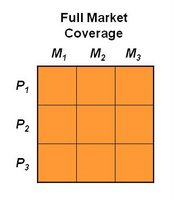Paco Underhill, managing director of the retail consultant Envirosell Inc., offers the following advice for fine-tuning retail spaces in order to keep shoppers spending:
Attract shoppers and keep them in store.
The amount of time shoppers spend in a store is perhaps the single most important factor in determining how much they will buy.
Honor the “transition zone”.
On entering a store, people need to slow down and sort out the stimuli, which means that shoppers will likely be moving too fast to respond positively to signs, merchandise, or sales clerks in the zone they cross before making the transition. Make sure there are clear sight lines.
Don't make them hunt.
Put the most popular products up front to reward busy shoppers and encourage leisurely shoppers to look more. At Staples, ink cartridges are one of the first products shoppers encounter after entering.
Make merchandise available to the reach and touch.
It is hard to overemphasize the importance of customers' hands. A store can offer the finest, cheapest, sexiest goods, but if the shopper cannot reach or pick them up, much of their appeal can be lost.
Men do not ask questions.
Men always move faster than women do through a store's aisles. In many settings, it is hard to get them to look at anything they had not intended to buy. Men also do not like asking where things are. If a man cannot find the section he is looking for, he will wheel about once or twice, then leave the store without ever asking for help.
Women need space.
A shopper, especially a woman, is far less likely to buy an item if her derriere is brushed, even lightly, by another customer when she is looking at a display. Keeping aisles wide and clear is crucial.
Make checkout easy.
Be sure to have the right high-margin goods near cash registers to satisfy impulse shoppers. And people love to buy candy when they check out – so satisfy their sweet tooth.
Reference: Kotler & Keller, “Marketing Management”, 12th edition


















